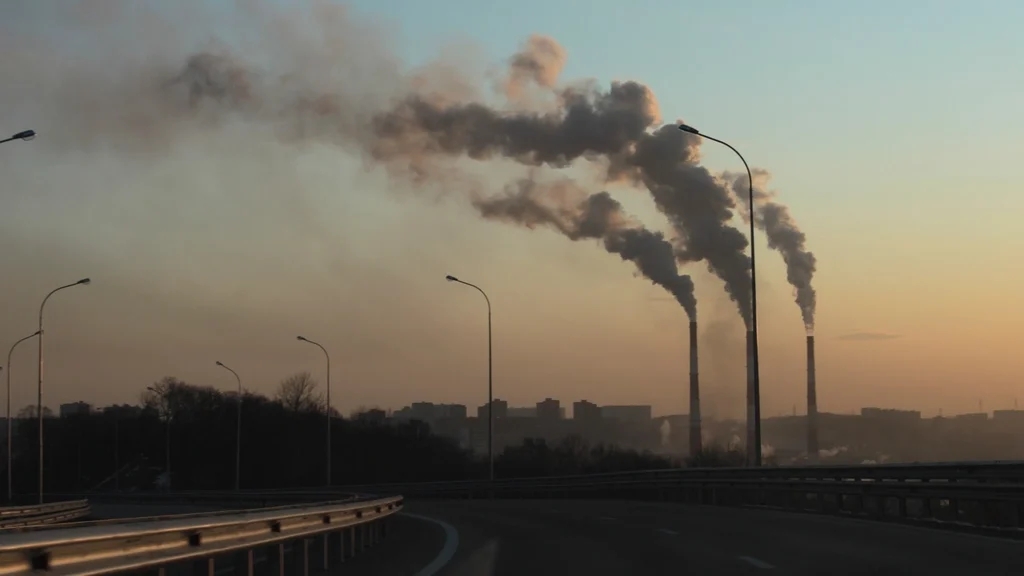Major urban and industrial areas are often hotspots for air pollution. This is unsurprising, given that dense populations and economic activities in these areas often result in the concentration of emission sources. When smog disperses over these heavily polluted areas, air pollutants can travel far beyond their original sources, reaching remote areas such as the North Pole.
Smog comprises a complex mixture of pollutants. While most pollutants disperse into surrounding cleaner air as they linger in the atmosphere, some are washed away by rain or snow, settling onto surfaces like soil, vegetation, bodies of water, and buildings. Others undergo chemical reactions in the atmosphere, facilitated by sunlight, transforming into different chemicals such as nitric acid.
However, certain pollutants have the ability to travel long distances. Carried by winds across oceans and vast stretches of land, they can drift thousands of kilometers from their emission sources. Anthropogenic pollutants including carbon monoxide, ammonia, sulfur oxides, nitrogen oxides, hydrocarbons, halocarbons, heavy metals, persistent organic pollutants, peroxyacetyl nitrate, and airborne microplastics have been detected in remote and sparsely populated areas. One such location is the northern polar regions of Earth, where an aerosol layer known as the “Arctic haze” becomes visible at high latitudes over the North Pole during late winter and early spring.

This dense orange-brown layer of aerosol consists mainly of sulfate and sea salt, varying in thickness from tens of meters to as much as one kilometer. It can persist for weeks, spreading across an area of the Arctic Ocean as vast as Africa. The primary sources of pollutants in the Arctic are thought to be northern Europe and Russia, with occasional contributions from North America and northeastern China.

currents) that transport contaminants to the Arctic” by AMAP / Free license per AMAP Usage Policy.
Although Arctic haze may never reach the same levels of severity and environmental hazard as urban smog, it serves as a stark reminder of the widespread impact of air pollution. The fact that even the most remote regions of Earth are affected underscores the global nature of this problem.■
Sources
- Air Pollution and Health in Cities | State of Global Air
- Atmospheric composition in the European Arctic and 30 years of the Zeppelin Observatory, Ny-Ålesund | European Geosciences Union
- Quinn, P. K., Shaw, G., Andrews, E., et al. (2007). Arctic Haze: Current Trends and Knowledge Gaps. Tellus, 59, 99-114. doi:10.1111/j.1600-0889.2006.00238.x
- Arctic Haze | Safe Drinking Water Foundation
- NOAA. (2007). ARCPAC: Aerosol, Radiation, and Cloud Processes Affecting Arctic Climate: Science and Implementation Plan. (NOAA Climate Forcing Program Project for the International Polar Year 2008).
- Hamilton, B.M., Jantunenb, L., Bergmann, M., et al. Microplastics in the atmosphere and cryosphere in the circumpolar North: a case for multicompartment monitoring. Arctic Science 8: 1116–1126 (2022). dx.doi.org/10.1139/AS-2021-0054.
- Macdonald, R.W., Harner, T., Fyfe, J., Loeng, H., Weingartner, T. (2003). AMAP Assessment 2002: The Influence of Global Change on Contaminant Pathways to, within, and from the Arctic. Arctic Monitoring and Assessment Programme (AMAP), Oslo, Norway. xii+65 pp.
- Plastic pollution in the Arctic | Nature Reviews Earth & Environment
- Cover image: “Factory pollution” on Openverse.org / CC0 1.0.



Leave a comment